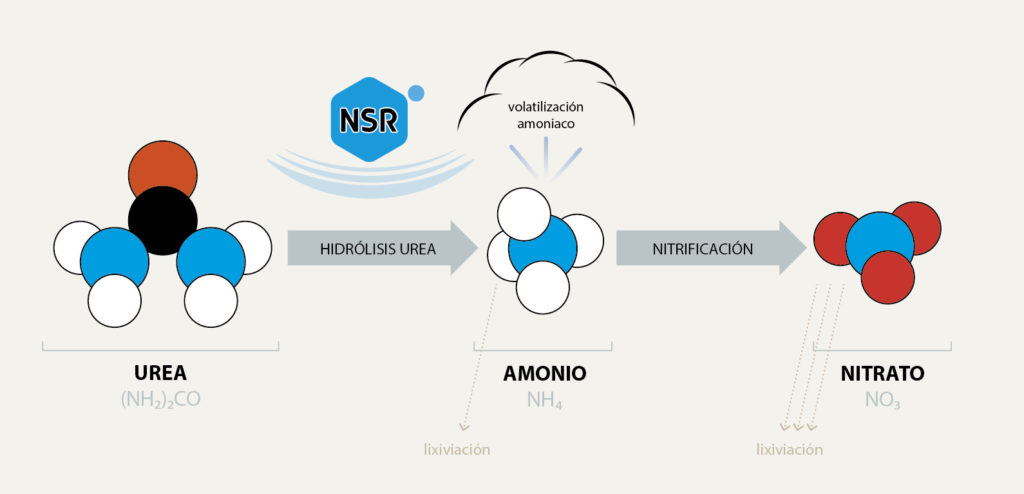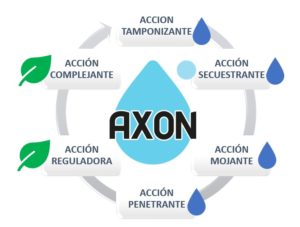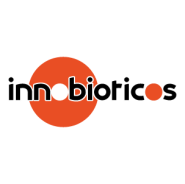R&D
The support and experience of DF GROUP allows us to focus exclusively on marketing new-generation fertilisers born out of intense and demanding research projects.
Our technologies have been created by considering the specificities of different crops, with the aim of helping to improve crop health alongside unconditional respect for the environment.
Efforts which deliver constant progress and our various technologies and processes patented so far:

AFF TECHNOLOGY
STRENGTHENED FERTILISER ACTION
AFF technology can be applied in technological compact fertilisers and is based on the stabilised combination of plant-based sugar alcohols and botanical extracts rich in signalling molecules that act on the cell metabolism.
- Effect inducing growth and root structure (positive response)
- Improved size and root structure.
- Increased efficiency in nutrient and water absorption.
- Bioavailability effect: Release and bioavailability of nutrients immobilised in soil.
- Reduced nutrient loss.
- Increased availability to be absorbed by the plant.
- Improved and optimised uptake of nutrients and water by plants.
- Water-soluble inorganic fertilisers are retained in root areas, with reduced leaching.
- Extremely high cation exchange capacity.
- Promotion of conversion of nutritional elements (N, P, K + Fe, Zn and other trace elements) into forms available to the plants.
- Increased nitrogen absorption by plants.
- Reduced phosphorus reaction with (Ca, Fe, Mg and Al) releasing the element in an available and beneficial form for plants.
WHAT SOLUTIONS ARE MAKING USE OF THIS TECHNOLOGY?

NSR TECHNOLOGY

NSR® technology® decreases early ammonia volatilisation by inhibiting the passage of urea nitrogen to ammonia:
- EAmmonia is mainly volatilised in the days following urea applications.
- Ammonia volatilisation is amplified in alkaline soils, with high temperatures and sufficient humidity (up to 2% of total/day).
- The surface applications of urea also amplify the process of ammonia volatilisation.
- Temporarily slows down the activity of the urease enzyme.
- NSR® is highly selective and does not affect soil-friendly microorganisms. After acting it breaks down without leaving any harmful residue for the soil and its microorganisms.
- Thanks to the manufacturing process of the DFINNOVA compacted complex (no physical and/or chemical aggression of raw materials and 100% mechanical compaction), NSR technology is stabilised as part of the pellet (instead of being a coating, as in other manufacturing processes).
>> MAXIMUM TECHNOLOGY ACTIVITY EFFICIENCY.
- Decreases nitrate accumulation in soil.
- Facilitates mixed nutrition (simultaneous assimilation of AMMONIUM + NITRATE)
- Increases performance.
- Supports root growth.
- Greater application time flexibility.
- Specially recommended for
- Application to alkaline soils.
- High temperatures.
- Surface applications of base and top dressing.
WHAT SOLUTIONS ARE MAKING USE OF THIS TECHNOLOGY?

ASR® TECHNOLOGY

ASR® technology® inhibits the passage of ammoniacal nitrogen to nitric, serving to:
- Ensure nutrition throughout crop growth.
- Reduce washing losses.
- Reduce greenhouse gas emissions and carbon footprint.
- Partially and specifically slows down the activity of NITROSOMONAS bacteria.
- Does not kill or harm bacteria.
- Results in a decrease in the rate or the amount of ammoniacal nitrogen converted to nitrates.
- Highly selective >> does not affect other genera of soil-friendly bacteria.
- Thanks to the manufacturing process of the DFINNOVA compacted complex (no physical and/or chemical aggression of raw materials and 100% mechanical compaction), NSR technology is stabilised as part of the pellet (instead of being a coating, as in other manufacturing processes).
>> MAXIMUM TECHNOLOGY ACTIVITY EFFICIENCY.
- Decreases nitrate accumulation in soil.
- Reduces losses of N.
- Increases availability of N.
- Facilitates mixed nutrition (simultaneous assimilation of AMMONIUM + NITRATE)
- Increases productive performance.
- Supports the development and structure of the root system.
- Higher energy efficiency >> protein synthesis based on ammonium nutrition is less energy-costly (ATP) than nitrate-based.
- Nitrate > ammonium > aa > protein >> 20 ATPs
- Ammonium >> aa >> protein >> 5 ATPs
- Greater application time flexibility.
- Specially recommended for
- Application to alkaline soils.
- High temperatures.
- Surface applications of base and top dressing.
WHAT SOLUTIONS ARE MAKING USE OF THIS TECHNOLOGY?

SBD TECHNOLOGY
CONTINUOUS BIOAVAILABILITY SILICON
A solution for water and/or saline stress through the on-demand release of mono-silicic acid, which promotes greater efficiency in water use (stomatal conductance), increased photosynthetic rate and higher chlorophyll content.
SILICON is continuously transformed into mono-silicic acid in the soil for a period of 8 – 16 WEEKS.
SBD provides continuous release of mono-silicic acid (MA), which is important for 2 reasons:
- There will be MA in the soil when the plant needs it (such as during times of environmental stress, flowering and fruit setting, etc.)
- Continuous release of MA in small quantities reduces formation of polymeric silicon which is not available to the plant.
- The leaves, stems and stalks of the plants present more upright growth, giving more even light distribution within the canopy, favouring photosynthesis.
- Increases crop resistance to drought.
- Increases accumulation of dry matter.
- Positively increases the activity of some enzymes involved in photosynthesis.
- Reduces the leaf senescence.
- Can decrease leaf electrolyte loss, promoting increased photosynthetic activity in plants grown under water deficiency or heat stress.
- Reduces the availability of toxic elements such as aluminum (Al) in plant roots.
- Increases crop resistance to stress caused by salinity.
WHAT SOLUTIONS ARE MAKING USE OF THIS TECHNOLOGY?

MBC TECHNOLOGY
Complexed Biotech Matrix
MBC technology can be applied in liquids and is based on the stabilised combination of plant-based sugar alcohols and botanical extracts rich in signalling molecules that act on the cellular metabolism.
- Effect inducing growth and root structure (positive response)
- Improved size and root structure.
- Increased efficiency in nutrient and water absorption.
- Bioavailability effect: Release and bioavailability of nutrients immobilised in soil.
- Reduced nutrient loss.
- Increased availability to be absorbed by the plant.
- Improved and optimised uptake of nutrients and water by plants.
- Water-soluble inorganic fertilisers are retained in root areas, with reduced leaching.
- Extremely high cation exchange capacity.
- Promotion of conversion of nutritional elements (N, P, K + Fe, Zn and other trace elements) into forms available to the plants.
- Increased nitrogen absorption by plants.
- Reduced phosphorus reaction with (Ca, Fe, Mg and Al) releasing the element in an available and beneficial form for plants.
WHAT SOLUTIONS ARE MAKING USE OF THIS TECHNOLOGY?

TECHNOLOGY EUee
EUe technology is based on the stabilised combination of different substances of low molecular weight and organic origin (polyols).
The plant identifies polyols as a natural photosynthetic substance, allowing them to easily penetrate the flower without the need for additional energy, , transporting more nutrients more efficiently to the areas of formation and growth.
- High rate of leaf adsorption.
- Increases speed up to 10 times.
- Faster action: Immediate transportation by phloem to reach the plant organs.
- Reduced losses in severe weather.
- Nutrient intake without extra energy cost.
- Especially recommended under conditions where the plant requires a positive energy balance.
WHAT SOLUTIONS ARE MAKING USE OF THIS TECHNOLOGY?

AP TECHNOLOGY
A natural technological complex x rich in betaines and polyols, acting as an osmoregulator and reactivator of aquaporins.
It promotes efficient, rapid root absorption of nutritional elements and water without extra energy expenditure.
- Protection against blockage > CHELATING ACTION
- Plant transporter agent > MOBILISING ACTION
- Direct action – PRIMARY METABOLISM > Nutrition
- It acts as a osmoregulator by balancing the osmotic gradient between the root and nearby soil and thus facilitating passive (apoplastic) penetration of water and nutrients.
- It reactivates the opening of the aquaporins of the symplastic pathway: the more that these channels open, the higher the rate of root absorption of water and nutrients.
WHAT SOLUTIONS ARE MAKING USE OF THIS TECHNOLOGY?


AXON TECHNOLOGY
Carboxylic and polycarboxylic acids
AXON is a complex of carboxylic and polycarboxylic acids with a 6-in-1 effect, acting as both soil conditioner and water conditioner. AXON is a selection of specific acids aimed at achieving maximum efficacy with minimum risk. It is very safe and does not burn, as it is a weak acid.
- Buffering: regulates the pH of the mixture (decreases the pH to a certain limit)
- Sequestering: sequesters ions (such as calcium and magnesium) that can inactivate the active material of phytosanitary product.
- Penetrating: causes stomata to open by differences in osmotic pressure.
- Moistening: decreases the surface tension of the mixture and results in a flatter drop that gives greater surface coverage on the leaf.
- Regulatory: Decreases pH in the rhizosphere, favouring the assimilation of microelements.
- Complexing: protects microelements by promoting their absorption.
- As a soil conditioner it increases the efficacy of microelements.
- As a universal water conditioner it increases the efficacy of phytosanitary products.
WHAT SOLUTIONS ARE MAKING USE OF THIS TECHNOLOGY?

VACCIN+
Inducer of secondary metabolism

This technology is based on complex plant-based organic substances. They allow it to induce biochemical acclimation responses to stress situations with a memory effect.
Better crops despite intense and persistent abiotic stresses.
- Preventive treatment (before abiotic stress occurs):
- Induces a more powerful response.
- Shortens response time.
- Treatment during abiotic stress:
- Induces reactivation of primary cell metabolism >> photosynthesis and respiration
- Induces activation of secondary cell metabolism >> production of substances that facilitate acclimation.
- Induces and activates secondary metabolic processes responsible for abiotic stress tolerance.
- Speeds up and boosts natural processes of stress acclimation.
- Facilitates faster acclimatisation response.
- Mitigates severe cellular lesions and facilitates recovery of primary-secondary metabolism balance at the cellular level.
WHAT SOLUTIONS ARE MAKING USE OF THIS TECHNOLOGY?

INNOBIOTICS TECHNOLOGY
MICROBIAL ACTION
This technology uses microbial complexes with beneficial activity for crops, with properties related to phosphorus solubilisation, water and nutrient absorption, as well as nitrogen fixing.
Technological solutions based on the perfect balance between a consortium of beneficial soil microorganisms and the agronomic benefits of Gelidium and Macrocystis algae.
- Consortia of micro-organisms: They perform basic functions in the soil, such as solubilisation of certain mineral elements (mostly phosphorus), water absorption, mineralisation of organic matter, fixing of atmospheric nitrogen, etc.
- Algae: aprovide major concentrations of alginates and trace elements essential for the proper functioning of crops.
Our INNOBIOTIC solutions do not contain added chemicals or genetically modified algae or microorganisms.
- Supports plant development and strength from the start of the growing cycle.
- Enriches the soil’s biological potential, encouraging the recovery of tired or chemically worn soils.
- Accelerates soil organic matter transformation processes.
- Promotes the release of nutrients such as nitrogen and phosphorus and improves their absorption through the root system of plants.
- Promotes nitrogen fixing.
- Aid in phosphorus and potassium solubilisation, increasing availability.
- Facilitates the assimilation of micronutrients such as iron.
WHAT SOLUTIONS ARE MAKING USE OF THIS TECHNOLOGY?
We have the mentality, and also have the means.
IF YOU CAN THINK IT, YOU CAN DO IT
for DFINNOVA, every day is a challenge. And whenever there is a need to fill or a way to be more efficient, there is definitely work to be done.
























